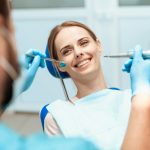10 HABITS THAT CAN DAMAGE YOUR TEETH
Inadequate hydration
Drinking a glass of water after a meal helps to wash away food particles and bacteria and their acidic byproducts that was produced. Water also washes away stains that could be in food thus preventing them from sticking to the tooth surface. Water is also important for adequate production of saliva, saliva is important in the defense action of the mouth in different ways for example it has antitoxins to neutralize toxins that could be produced by bacteria etc, it also has calcium ions which continuously remineralize the tooth thus strengthens the tooth.
Tobacco smoking
Tobacco produces stains which stick to teeth thus discolors them. Tobacco reduces production of saliva and thus all the beneficial functions of saliva discussed earlier among others are not achieved. Tobacco smoking is strongly associated with gum diseases which when not treated may result in loss of teeth. Another harmful effect is that it may lead to cancer of the mouth.
Using your teeth as a tool.
For those who have the habit of opening soda bottles with their teeth among other uses, some of the damages you predispose your teeth to include chipping/cracking or even loss of the tooth. So next time you are in that position ask yourself, is it easier to get a bottle opener or fix your chipped tooth.
Brushing too hard.
It may be tempting to think that brushing your teeth vary hard with a hard brush may result in ‘cleaner’ teeth. This is often not the case. Often times the thinner portions of enamel (especially near the gums) are worn off. Also, the gum next to the tooth is destroyed. What is the overall effect of this? A lot sensitivity such that it is next to impossible to take that cold ice cream or hot cup of coffee you love.
Thumb sucking
Sucking of the thumb in children often result in many effects. The most common being issues with alignment of the teeth. The thumb acts as a barrier between the opposing teeth meeting thus this may result in pushing the teeth upper teeth being pushed too far forward (increased overjet) or a gap between the upper and lower teeth when biting teeth together (open bite). These are always expensive and time consuming to correct and thus it is better to prevent than to treat them.
Grinding teeth
This usually occurs in a subconscious condition called bruxism. This is usually happening during sleep. So, how do you know you grind your teeth in your sleep? When you wake up there could be jaw pains, The surfaces of the back teeth begin to flatten. Grinding teeth leads to fractured or chipped teeth, joint & muscle dysfunction, chronic facial pain. How do we deal with it? By construction of a mouth guard which prevent the back teeth from meeting during sleep.
Drinking too much soda and soft drinks
Sodas contain a high level of sugar as well as being very acidic. How does this affect your teeth? The acidity dissolves the enamel making teeth thinner and less resistant to tooth decay. This combined with the excess sugar creates an environment where the teeth are thin and there is a lot of sugar on them. This promotes tooth decay. Next time you are thirsty, consider water rather than soda.
Frequent snacking of sugary foods in between meals
The best time to have that piece of cake or sugary treat is right after meals. Why is it so? At this time, the salivary glands are activated and a lot of saliva is produced that confers its protective effect to the teeth thus reducing incidences of tooth decay.
Avoiding the dentist
Dental visits are very important to the maintaining the health of your teeth. A dentist is able to detect decay among other dental diseases early. This then enables early management and also advice on how to prevent it next time. Periodic cleaning of the teeth also enables us know where we don’t clean well and thus we improve on our oral hygiene.
Use of toothpicks
Toothpicks are used to remove food particles that may be stuck between teeth. These sometimes poke the gum thus injuring them. What is the best way to clean in between teeth? With the aid of dental floss. Click here to learn more about how to use dental floss.















